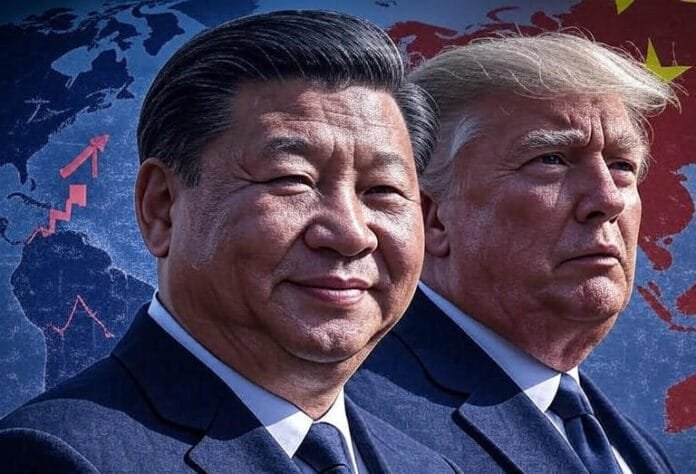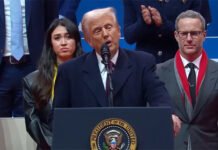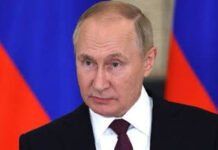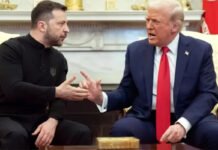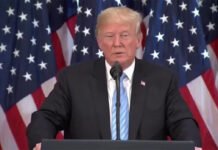The United States trade landscape is once again in the spotlight as President Donald Trump escalates his economic measures, imposing the highest tariff on India while giving China a 90-day negotiation window. This calculated move intertwines economic leverage with political strategy, aiming to reshape trade relations while securing domestic political gains.
Trump’s Tariff Strategy: India Hit Immediately, China Gets Breathing Room
President Trump has already implemented a 25% tariff on Indian imports, with a clear warning: if no trade resolution is reached, a 50% tariff will take effect from August 27. This unprecedented figure would mark the highest tariff rate in the world against any nation.
Meanwhile, China has been given 90 days before new tariffs take effect, signaling a softer, more negotiable approach. According to U.S. Trade Representative Office (USTR) officials, negotiations with China are in their final phase, focusing on intellectual property rights, technology transfer regulations, and agricultural import concessions.
This dual approach—punitive action against India while offering China a grace period—reflects a nuanced balancing act. It sends a firm message of protectionism to domestic industries while leaving the door open for a strategic deal with Beijing.
Economic Stakes and Political Calculations
Despite the U.S. trade deficit with India being considerably smaller than with China, Trump’s move against India carries lower political risk. By targeting India immediately, the administration projects a strong stance on trade enforcement without jeopardizing high-stakes negotiations with China.
The political calculus is clear:
India’s retaliatory capacity is limited compared to China’s.
Dependence on the U.S. market makes India vulnerable to rapid policy shifts.
Tariffs on India serve as a demonstration of resolve to American manufacturing and agricultural sectors.
According to The Wall Street Journal, this approach allows Trump to show voters that his administration prioritizes American industry protection, while still seeking concessions from China that could be framed as major political victories in the upcoming election cycle.
Impact on U.S.–India Trade Relations
The tariff escalation against India has the potential to disrupt long-standing bilateral trade relations. India, a growing economic partner and a critical player in the Asia-Pacific economic framework, now faces the prospect of losing preferential access to the American market.
Key sectors at risk include:
Textiles and apparel, a major Indian export to the U.S.
Pharmaceuticals, where India is a leading supplier of generic medicines.
Information technology services, already under scrutiny due to immigration and outsourcing debates.
A 50% tariff would not only erode price competitiveness but also force Indian exporters to rethink supply chains and target alternative markets.
China’s 90-Day Window: Strategic Leverage and Negotiation Tactics
By delaying tariffs on Chinese goods, the Trump administration creates a bargaining opportunity to secure structural changes in Beijing’s trade policies. The key U.S. demands include:
Stronger intellectual property protections to safeguard American innovations.
Reduction of forced technology transfers for foreign companies operating in China.
Greater access for U.S. agricultural exports, particularly soybeans, pork, and dairy products.
Trade experts note that this dual-track approach sends a message: while India faces swift penalties, China still has a path to avoid escalation, encouraging Beijing to offer concessions in return for tariff relief.
Domestic Economic Implications in the United States
For American consumers, the tariff disparity has a short-term cushioning effect. Indian goods, particularly in textiles and certain manufacturing sectors, will become more expensive, but Chinese imports remain a cheaper alternative during the negotiation window.
Milani Verma, senior researcher at the Carnegie Endowment for International Peace, highlights that this tactic ensures affordable consumer choices until domestic production ramps up. However, this could be a temporary relief, as future tariffs on China could eventually impact retail prices.
Strategic Signaling to the Asia-Pacific Region
Beyond economics, the move carries geopolitical weight. India’s status as a key partner in counterbalancing China’s influence in the Asia-Pacific could be tested by the tariffs. By tying market access to political bargaining, Washington risks straining strategic cooperation with New Delhi on issues such as defense, regional security, and energy.
Economist Edward Alden of the Brookings Institution describes this as a calculated message:
To China — the U.S. is willing to negotiate, but concessions are expected.
To India — economic access to the U.S. market is conditional on political alignment.
Such moves could ripple through trade blocs and regional partnerships, altering the balance of economic alliances in Asia.
India’s Potential Response and Global Trade Dynamics
While India’s retaliatory power is limited compared to China, it is not without options. Possible measures could include:
Targeted tariffs on U.S. agricultural products.
Delays in defense procurement deals with American companies.
Strengthening trade ties with Europe and Southeast Asia to offset U.S. market losses.
These retaliations, though smaller in scale, could still signal India’s willingness to resist unilateral U.S. pressure, especially if domestic industries push for reciprocal action.
Political Gains: The Underlying Driver
At the heart of this strategy is the pursuit of political capital. By taking a hard stance against India and a measured one with China, President Trump positions himself as both a tough negotiator and a pragmatic dealmaker.
The optics are crucial:
Immediate tariffs on India prove action is being taken to protect American jobs.
Ongoing talks with China showcase diplomatic patience and strategic foresight.
Any eventual deal with China can be presented as a major victory for American interests.
Conclusion: A High-Stakes Economic and Political Balancing Act
The decision to impose the highest-ever tariffs on India while granting China a 90-day reprieve reflects more than just economic policy—it is a sophisticated play for global influence and domestic approval.
For India, the challenge will be to navigate the economic shock without sacrificing strategic ties. For China, the clock is ticking to offer concessions that meet U.S. demands without appearing to surrender. For the United States, the outcome will shape both its trade future and its political narrative in the months ahead.
As the August 27 deadline approaches, the world watches closely to see whether this gamble will yield tangible trade victories or further strain international relations in an already volatile global market.

